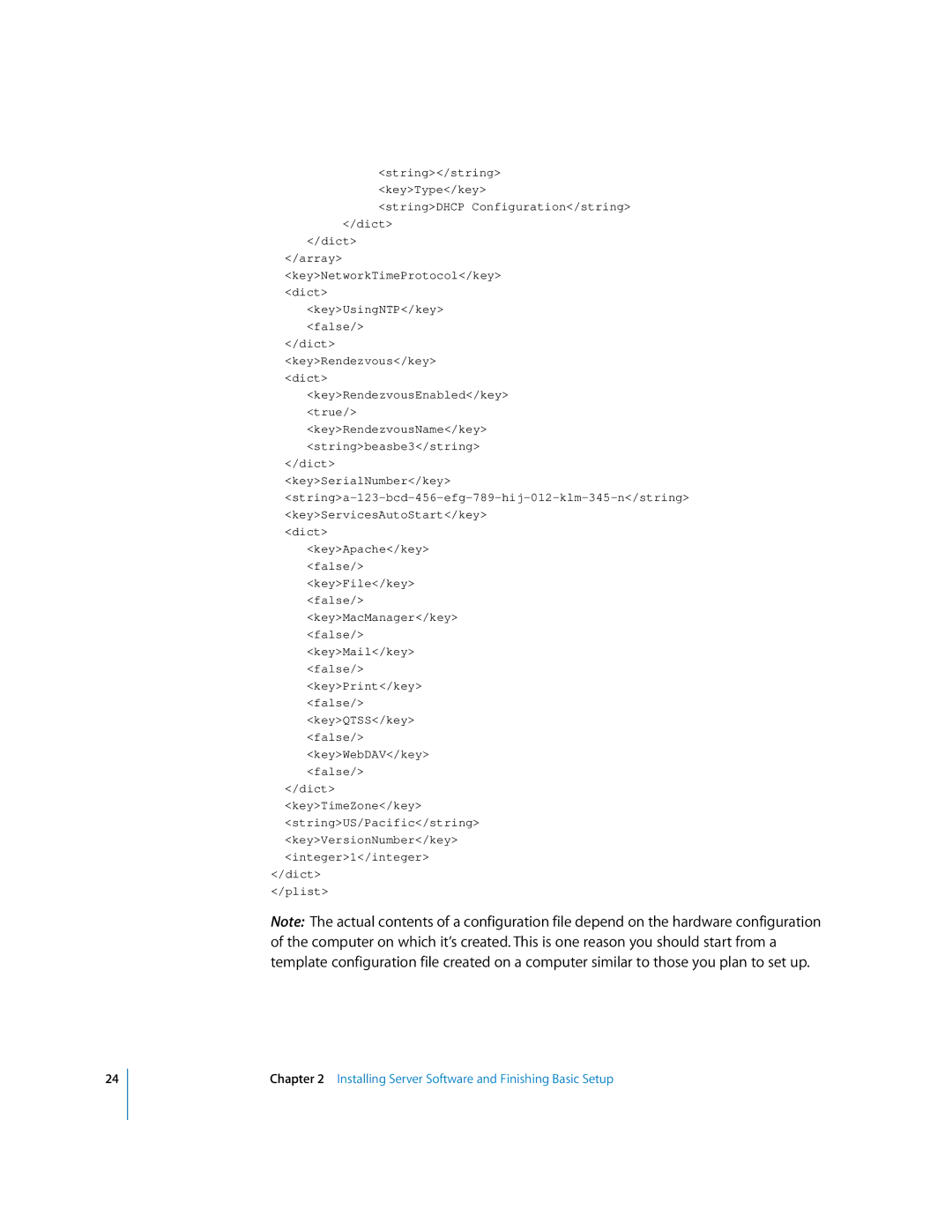
24
<string></string>
<key>Type</key>
<string>DHCP Configuration</string> </dict>
</dict>
</array>
<key>NetworkTimeProtocol</key>
<dict>
<key>UsingNTP</key>
<false/>
</dict>
<key>Rendezvous</key>
<dict>
<key>RendezvousEnabled</key>
<true/>
<key>RendezvousName</key>
<string>beasbe3</string>
</dict>
<key>SerialNumber</key>
<dict>
<key>Apache</key>
<false/>
<key>File</key>
<false/>
<key>MacManager</key>
<false/>
<key>Mail</key>
<false/>
<key>Print</key>
<false/>
<key>QTSS</key>
<false/>
<key>WebDAV</key>
<false/>
</dict>
<key>TimeZone</key>
<string>US/Pacific</string>
<key>VersionNumber</key>
<integer>1</integer>
</dict>
</plist>
Note: The actual contents of a configuration file depend on the hardware configuration of the computer on which it’s created. This is one reason you should start from a template configuration file created on a computer similar to those you plan to set up.
